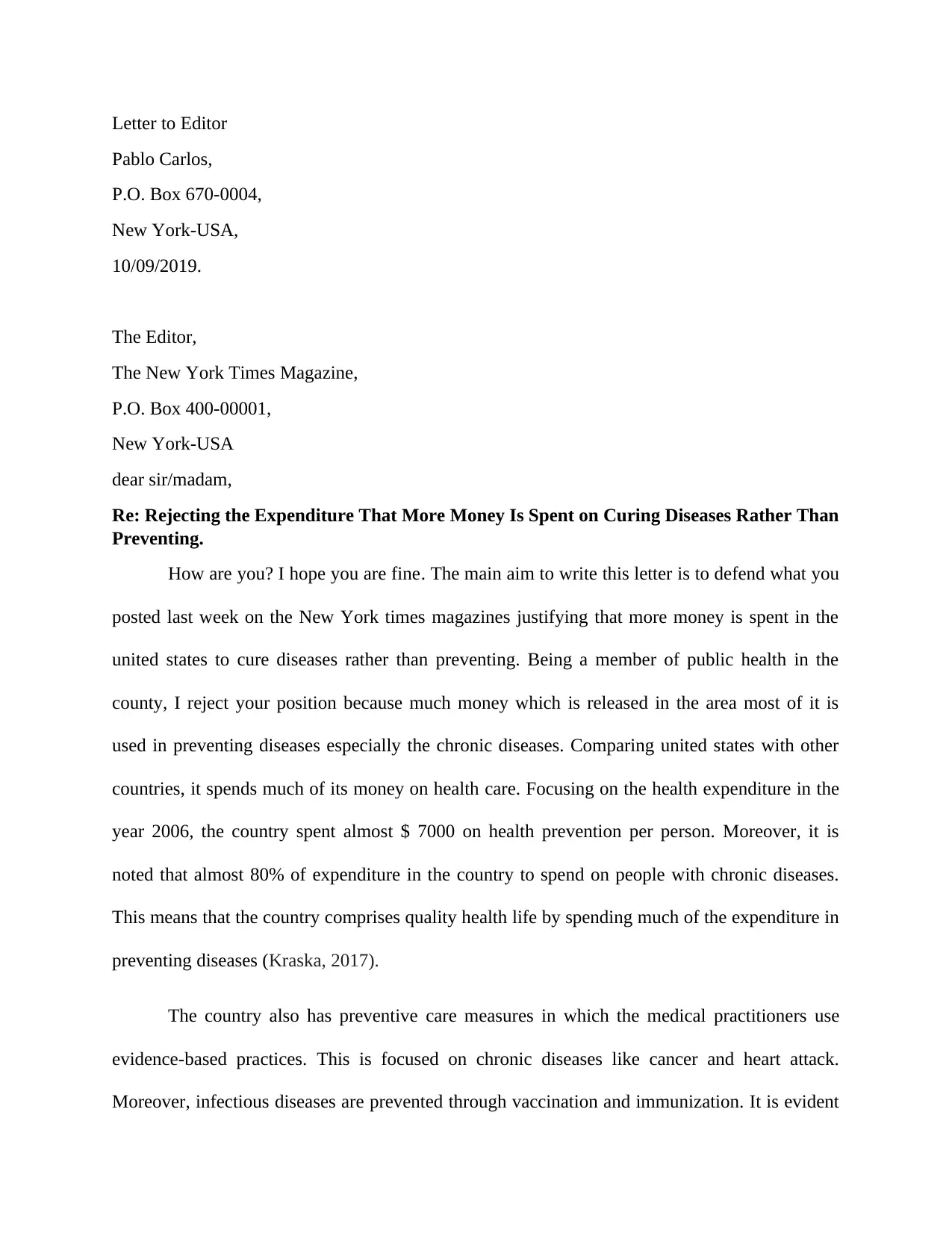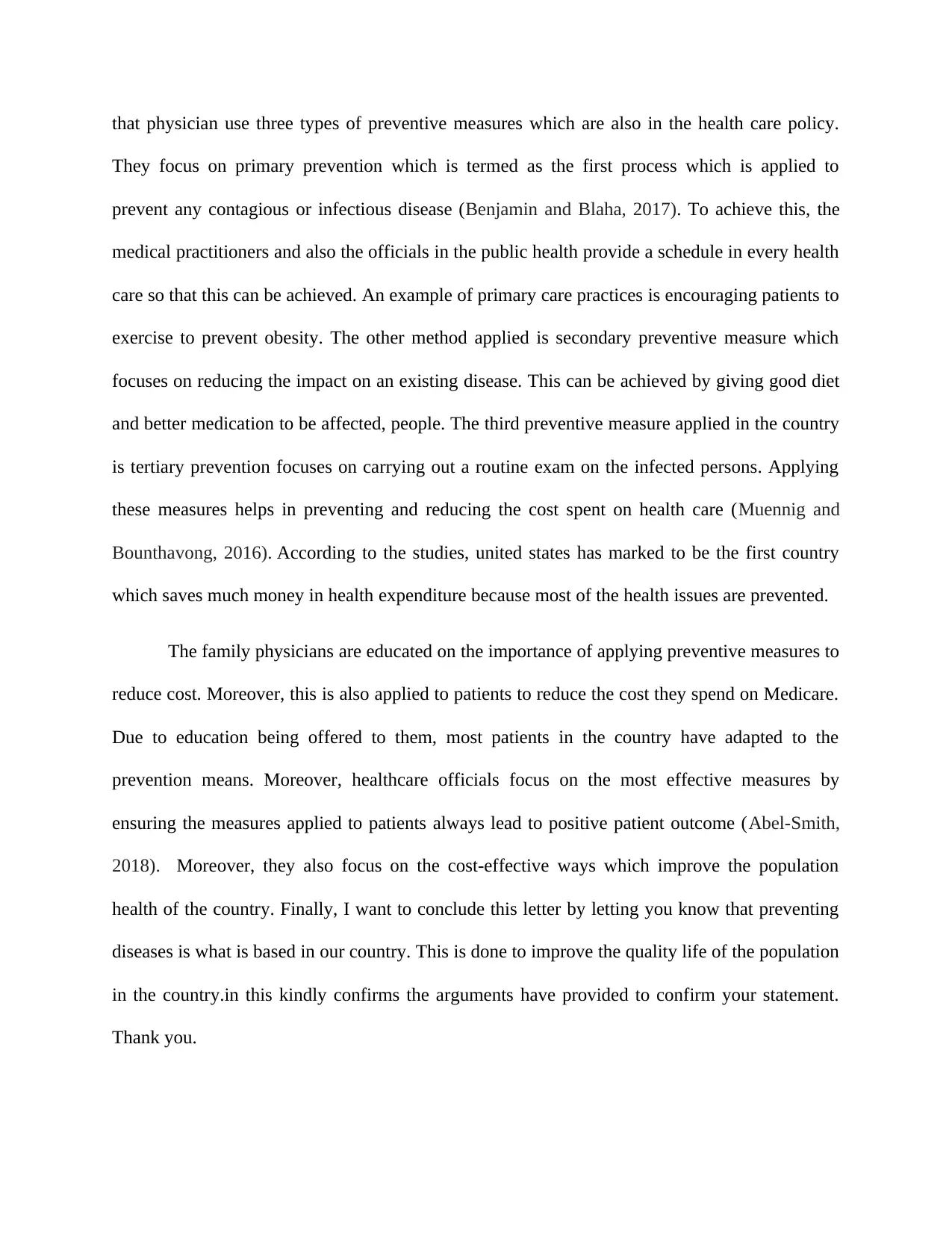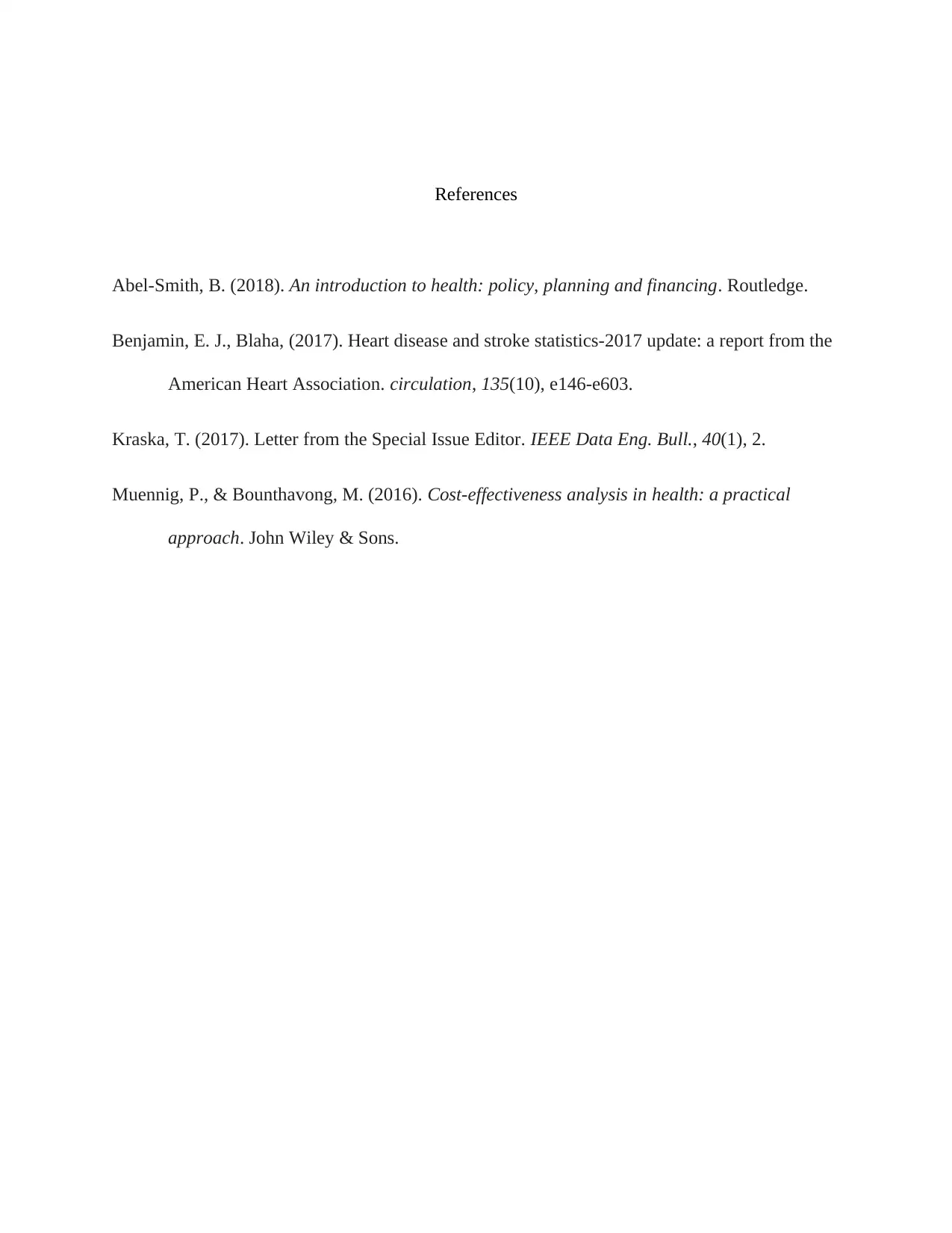Letter to Editor: USA Health Expenditure on Disease Prevention
VerifiedAdded on 2022/11/22
|4
|733
|244
Homework Assignment
AI Summary
This assignment is a letter to the editor written by a student, Pablo Carlos, defending the US's allocation of healthcare expenditure towards disease prevention rather than solely focusing on cures. The letter critiques a previous article that suggested the opposite. Carlos, citing his background in public health, argues that the US invests significantly in preventive measures, particularly for chronic diseases, and references the high per-person spending on health prevention. The letter highlights the implementation of evidence-based practices, including primary, secondary, and tertiary prevention strategies, such as encouraging exercise, providing medication, and conducting routine exams. Carlos emphasizes that these measures are cost-effective and improve population health, concluding that disease prevention is crucial for enhancing the quality of life in the US and refuting the editor's prior claims. The letter includes references to supporting literature.
1 out of 4











![[object Object]](/_next/static/media/star-bottom.7253800d.svg)